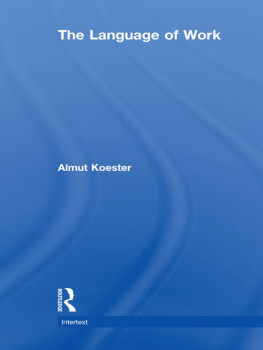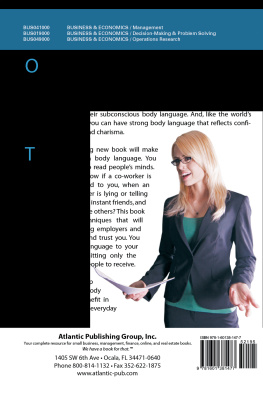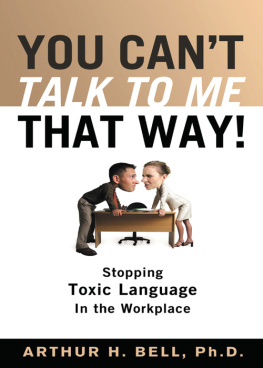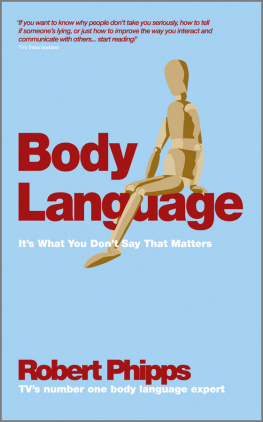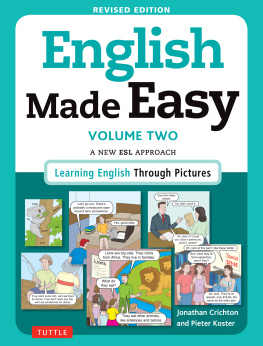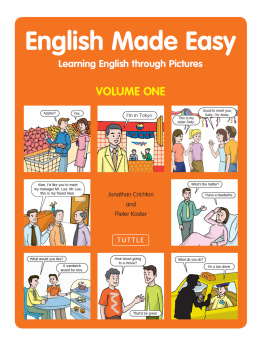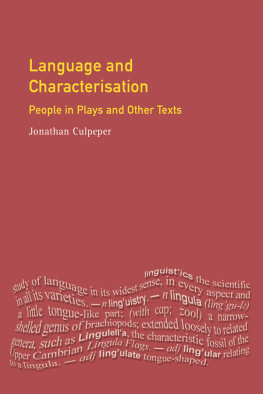acknowledgements
Id like to thank all those people who let me use their voices throughout this book, and those who gave permission for the letters, emails and the Conversation stoppers text to be used in Unit three. And of course a big thanks to Terry for this support, as always, in this project.
Carter, R. and McCarthy, M., Exploring Spoken English , 1997, Cambridge University Press, extract from pp. 856, Students Chatting Round the Tea Table. Reproduced by permission of Cambridge University Press.
Drew, H. and Heritage, J., Talk at Work , 1993, Cambridge University Press, extract by Christian Heath from p. 240. Reproduced by permission of Cambridge University Press.
Case Study Nursing, from Opportunity: The Careers Magazine for Black and Asian Students , vol. 3, no. 4, p. 13. Reproduced by permission of the Independent .
The Fast Stream Development Programme advertisement for the Inland Revenue, appeared in Advantage: The Older Graduates Career Guide , November 2002. Reproduced by permission of the Inland Revenue.
Emma Coghill: Teacher, from Advantage: The Older Graduates Career Guide , November 2002. Reproduced by permission of Cherry Publishing Ltd.
Workplace Conversations, from the Cambridge International Corpus. Cambridge University Press.
Cheepen, C. Small talk in service dialogue: the conversational aspects of transactional telephone talk, 2000, from J. Coupland (ed.), Small Talk , extract from pp. 288311. Reproduced by permission of Pearson Education.
Ready for lift off? by Ian Wylie, from the Guardian , 31 May 2003 The Guardian 2003. Reproduced with permission. www.guardian.co.uk.
Ask Rise, from the Guardian , 31 May 2003 The Guardian 2003. Reproduced with permission. www.guardian.co.uk.
FAQs, from Prospects: Focus on Work Experience 2003 . Reproduced by permission of Graduate Prospects.
Every effort has been made to contact copyright holders. Any omissions brought to the attention of the publishers will be rectified in future editions.
Unit one
Introduction to the language of work
Aims of this book
We spend a good part of our adult lives communicating at work. When we enter the world of work, we encounter many forms of spoken and written communication that are completely new to us, but, with time, we learn how to understand and use them ourselves. The language of work, therefore, plays an important role in the lives of most people. Even outside the workplace, people participate in professional inter-actions as customers, clients or patients: for example in interacting with doctors, solicitors, estate agents, banks etc. Most people are probably aware that the way they communicate with friends and family is different in many ways from the way they communicate with their boss, a co-worker or a client. But they might not be able to say exactly which features distinguish workplace and professional language from more everyday language.
The aim of this book is to explore the distinctive features of the language used in professional and workplace settings. Workplace discourse is embedded in professional and organizational contexts, and involves communication between people in variety of relationships and roles, for example bossemployee, sellercustomer etc. Therefore examining workplace language will also involve looking at the roles played by these social contexts.
This unit provides a general introduction to the topic of the book, by trying to answer the following two questions:
1 What is special about the language of work?
2 How does the language of work vary in different workplace settings?
What is special about the language of work?
According to Drew and Heritage (1992), institutional talk, as they call workplace and professional talk, differs from ordinary conversation in a number of ways:
Goal orientation: participants in workplace conversations usually focus on specific tasks or goals.
Turn-taking rules or restrictions: in some professional contexts (e.g. the courtroom) there are special turn-taking rules in operation. But even if no special rules exist, there may be unwritten restrictions on who speaks when; for example in doctorpatient consultations, it is the doctor who tends to ask the questions.
Allowable contributions: there may be restrictions on what kinds of contributions are considered allowable, i.e. on what participants may say.
Professional lexis: the professional/workplace context may be reflected in the lexical choice, i.e. in special lexis or vocabulary used by the speakers.
Structure: workplace and professional interactions may be structured in specific ways.
Asymmetry: workplace and professional interactions are often asymmetrical, that is often one speaker has more power and/or special knowledge than the other. Examples are conversations between a boss and an employee, or a doctor and a patient.
Note that although Drew and Heritage focus on the spoken language, all these distinguishing features of workplace language, except turn-taking rules and restrictions, also apply to the written language.
Activity
Look at the following two brief texts. The first, Text 1: Casual Conversation: ; Students Chatting Round the Tea Table, is from a casual conversation between students, and the second, Text 2: Workplace Conversation: Editorial Office, is from a workplace interaction. How are the two conversations different? Try to identify and note down differences relating to each of the six characteristics of workplace talk described above.
Text 1 Casual Conversation: Students Chatting Round the Tea Table
Three female students who share a house are having tea at home on a Sunday. Prior to the extract below, they have just been talking about food.
| 1 | S03 | I like Sunday nights for some reason, I dont know why |
| 2 | S02 | [laughs] cos you come home |
| 3 | S03 | I come home |
| 4 | S02 | You come home to us |
| 5 | S01 | and pig out |
| 6 | S02 | Yeah yeah |
| 7 | S03 | Sundays a really nice day I think |
| 8 | S02 | It certainly is |
| 9 | S03 | Its a really nice relaxing day |
| 10 | S02 | Its an earring, its an earring |
| 11 | S03 | Oh lovely oh, lovely |
| 12 | S02 | Its fallen apart a bit but |
| 13 | S03 | Its quite a nice one actually, I like that, I bet, is that supposed to be straight? |
| 14 | S02 | Yeah |
| 15 | S03 | Oh I think it looks better like that |
| 16 | S02 | And there was another bit as well, another dangly bit |
| 17 | S03 | What, attached to |
| 18 | S02 | The top bit |
| 19 | S03 | That one |
| 20 | S02 | Yeah so it was even |
| 21 | S03 | Mobile earrings |
| 22 | S01 | What, that looks better like that, it looks better like that |
(Carter and McCarthy 1997: 86)
Text 2 Workplace Conversation: Editorial Office
Sally, an editor, is talking to her boss, Mary, in Marys office. They have already been talking for some time about various work-related matters. Their conversation has just been interrupted by another person, who has now left.

